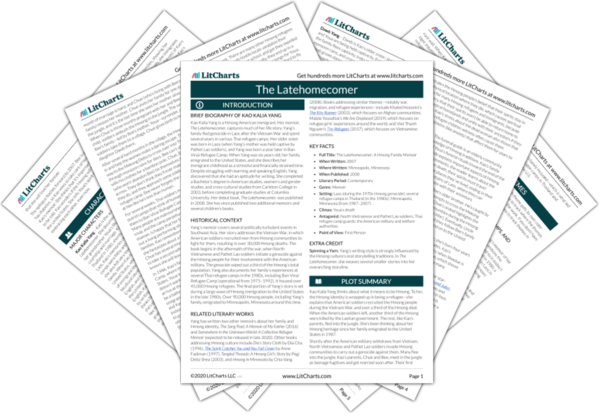Kao is excited to tell Youa about her successful essay for two reasons: first, she loves Youa more than anyone else (emphasizing the importance of familial love). She looks up to Youa and seeks her approval, which suggests that despite Hmong culture’s patriarchal norms, Youa is the true head of the family. Meanwhile, despite working for years to settle in the United States, the family’s residency status is still uncertain—in this way, immigrant life is often precarious and anxiety-ridden.


